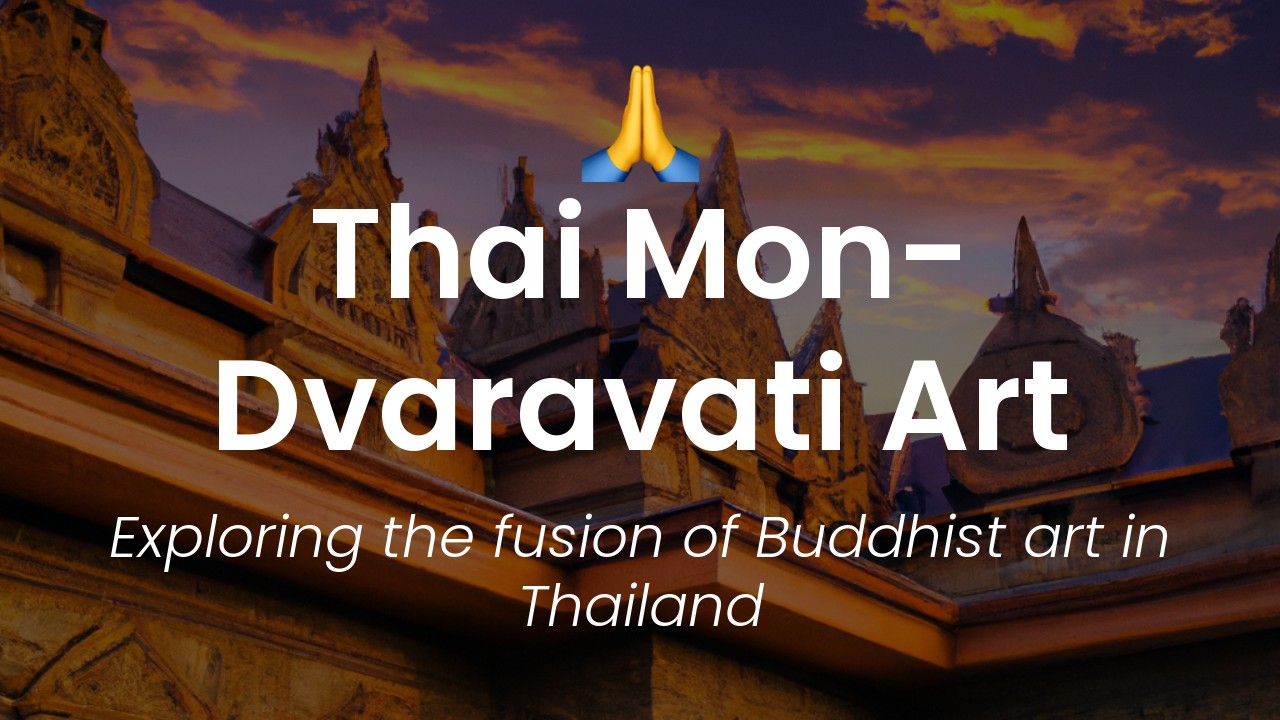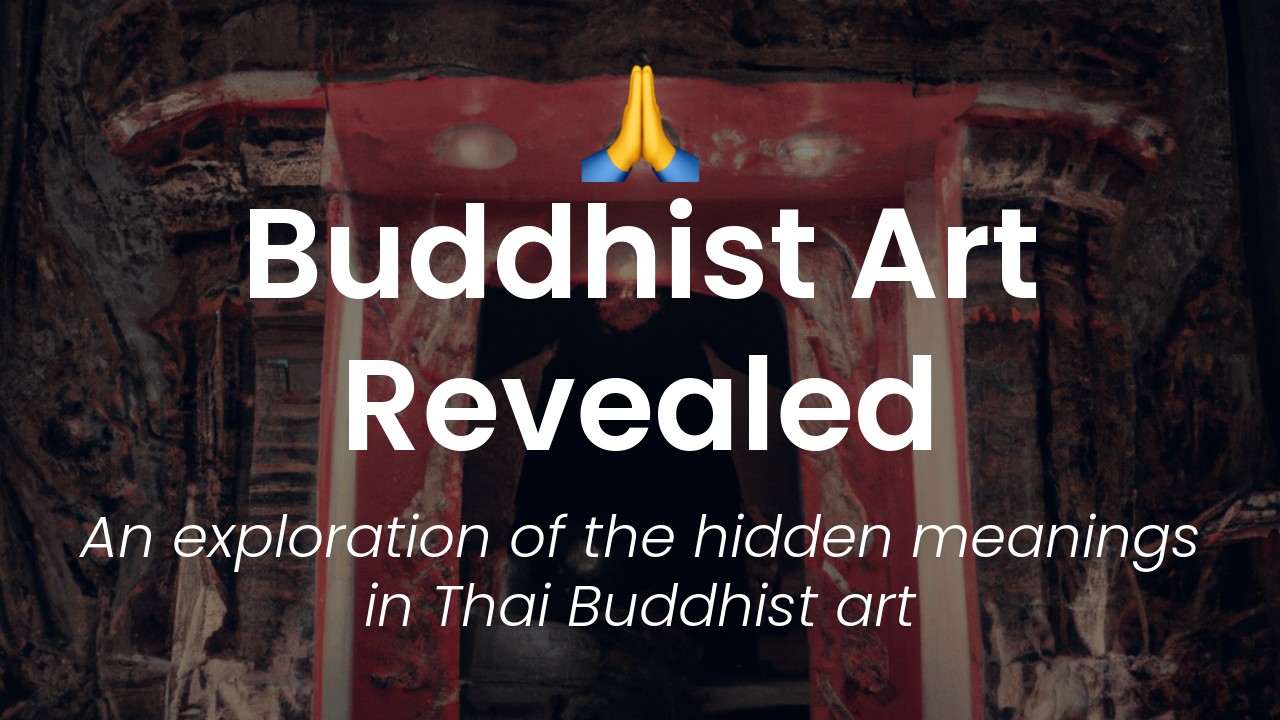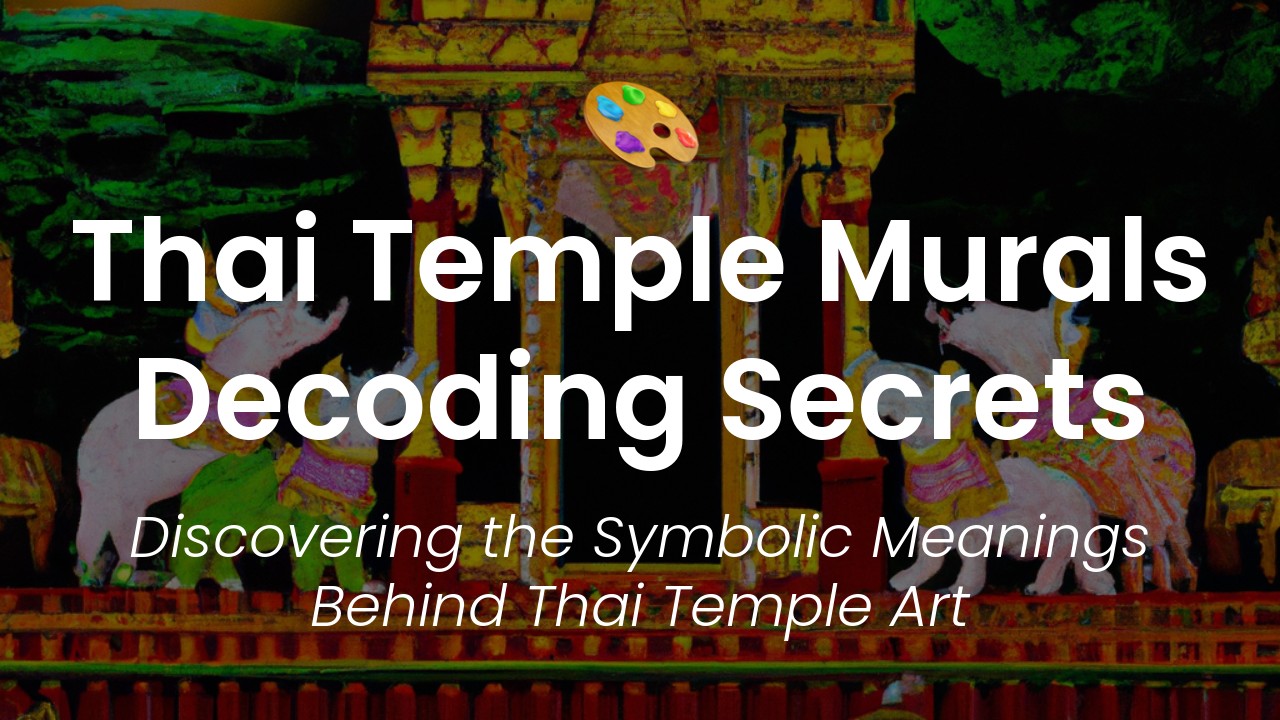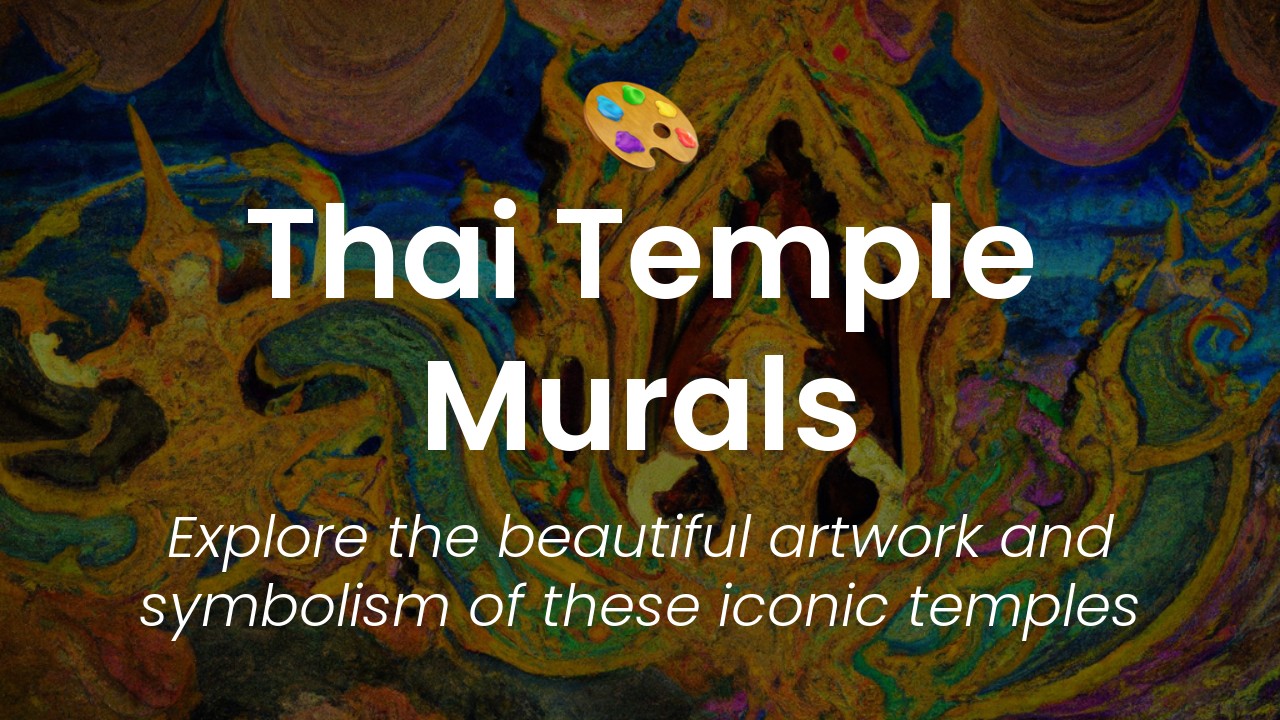As a blogger who is interested in Thai culture and tourism, I have always been fascinated by the various art forms that have emerged over the centuries. One of the most interesting aspects of Thai art is how it has been influenced by different cultural traditions throughout the ages. I am excited to share my thoughts on how the merging of two distinctive cultural traditions have resulted in the creation of some extraordinary art forms in Thailand.
The Mon and Dvaravati Cultures were two ancient kingdoms in Southeast Asia that were known for their incredible works of art and architecture. The Mon people, who were based in present-day Myanmar, were known for their exquisite sculptures and architecture. On the other hand, the Dvaravati culture, which was established in present-day Thailand, was known for their elaborate jewelry and metalwork.
Despite having distinctively different cultures and traditions, Mon and Dvaravati art and architecture exhibit several similarities, particularly in the context of Buddhist iconography. For instance, both cultures practiced Theravada Buddhism, which had a significant impact on the art forms that emerged in the region. Additionally, both cultures also practice the same style of architecture, the three-tiered roof temple. The merging of their cultural elements has created some beautiful pieces of art. In this blog post, I’ll explore some of these unique art forms and explain how the Mon-Dvaravati merger has had a significant impact on Thai art and culture.
Buddhist Influences on Mon-Dvaravati Art
Debated for many years, the Mon-Dvaravati Buddhist art reflects a fusion of two distinctive cultures. This blend of cultures creates unique and exquisite art styles that provide us with a glimpse into the past. The Mon-Dvaravati culture evolved from the 6th through the 11th centuries CE, with art and sculpture playing an integral part in shaping it. Most Buddhist art objects discovered from the Mon-Dvaravati era are made from bronze, silver, and stone.
Buddhism was introduced to the region from India in the 4th and 5th centuries CE, and it slowly merged with the Mon-Dvaravati culture, which was already well-established. The Mon-Dvaravati people's artistry was admired and flourished during the introduction and merging of Buddhism. Buddhist subjects had the most significant influence on Mon-Dvaravati art style.
Overview of Mon-Dvaravati Art Styles
Mon-Dvaravati art styles were created to showcase the teachings of Buddhism. The key elements presented in these art styles include proportionate symmetry and attention to detail. The style runs the gamut from subtle and delicate to powerful and forceful. The facial features of the Mon-Dvaravati Buddha sculptures were modeled after naturalistic proportions and expressions, with facial lines etched carefully and pulled taut. The ears are elongated and have appropriate stylization, identifying the compassionate Buddha.
Among the Mon-Dvaravati Buddhist art objects, the most common are statues and images of Lord Buddha. Two key Buddha postures arose in the Dvaravati styles: upright standing and cross-legged sitting. Both postures were used to interpret the Dhamma's main goals of wisdom, meditation, and liberation from suffering. The standing statues are typically adorned with the robe and srivatsa marks, while the seated statues are depicted in the lotus position.
Merging Mon-Dvaravati and Buddhist Art
The merge of Mon-Dvaravati and Buddhist cultures resulted in a unique piece of art. For example, the Mon-Dvaravati art influenced the design of San Chao Pho Sua Buddha by adding a traditional Thai touch to early Dvaravati art styles, the oldest form of Buddhist art in Thailand. This piece, made of bronze, is 68 centimeters long and depicts the Buddha riding a tiger.
The San Chao Pho Sua Buddha’s bronze casting technique is built primarily from the lost-wax method, a technique used in court artwork since the time of the Mon kingdom. The Buddha’s appearance reflects stylistic lessons learned from the Indian Pala period and later Dvaravati, Sukhothai, and Ayutthaya Buddhist art. The San Chao Pho Sua Buddha uniquely combines Northern Thai art styles with early Dvaravati influences, such as Buddha’s lotus pedestals.
Thailand’s Ban Chiang pottery is another example of the Mon-Dvaravati culture’s lasting influence on Buddhist art. Ban Chiang pottery reflecting abstract art styles presents a crude art form that mixes Buddhist-inspired motifs with naturalistic forms. The representations on these artifacts cover the Mon-Dvaravati art characteristics primarily seen in the early religious traditions.
Examples of Mon-Dvaravati Buddhist Art
The Mon-Dvaravati Buddhist art has both standing and sitting Buddha statues. A prime example of the latter is the Phra Si Satsada, a seated Buddha statue located at the Phra Si Rattana Mahathat temple in Kamphaeng Phet province. It is considered the most beautiful bronze statue from the Dvaravati period, with the detailing on the Buddha’s robe and the jewelry around its neck standing out.
The Baphuon Temple in Cambodia is another example of Mon-Dvaravati art’s influence on Buddhist architecture. The design of Baphuon is similar to early Mon-Dvaravati temple designs, with significant architectural features reflecting Khmer and Buddhist art styles. The temple’s design and sculptures are influenced by the Indian Gupta dynasty, which had a direct impact on early Mon-Dvaravati art.
Significance of the Mon-Dvaravati Buddhist Culture
The Mon-Dvaravati Buddhist culture is significant because it is the oldest form of Buddhist art in Thailand. It had a significant influence on Thai Buddhist art and architecture, leaving a lasting impression for many years to come. The Mon-Dvaravati art style has had a profound effect on the Thai culture and traditions, reflecting a history and legacy of exquisite craftsmanship.
Conclusion on the Importance of Cultural Fusion
In conclusion, the Mon-Dvaravati art style, a product of the blending of Mon-Dvaravati and Buddhist cultures, reflects culture fusion at its finest. These artifacts showcase how two cultures can come together, borrowing from each others’ unique art forms, to create a new and distinctive style. The Mon-Dvaravati Buddhist art proves how coming together and combining cultures can yield beautiful, creative results that deserve a place of honor in the world's art and architectural history.





